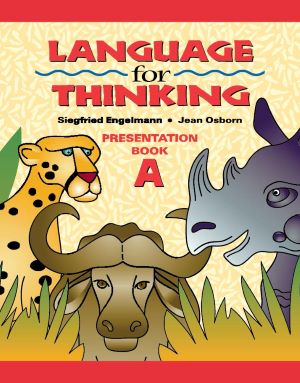About the program
Features:
-
Thoughtfully structured exercises, such as Classification, True/False, Analogies, and Absurdity, are designed to enhance reasoning and critical thinking skills.
-
Significant focus is placed on expanding vocabulary through activities involving homonyms, synonyms, opposites, and definitions.
-
Students have ample opportunities to apply newly learned vocabulary and concepts within sentence contexts.
-
There is extensive practice in word usage, including forming contractions and untangling sentences with double negatives.
-
Sequencing and retelling exercises challenge students to recall important details.
-
Inference activities encourage students to draw conclusions and articulate their reasoning.
-
The Placement Test and 15 Program Assessments ensure that students are engaged with concepts appropriate to their ability levels.


Request More Information
About the strands
The Language Arts Strand:
- Teaches the oral language skills necessary to understand what is said, written, and read in the classroom.
- Helps students to effectively communicate ideas and information.
- Develops students’ ability to successfully use writing strategies and process
The Literature Strand:
- Supports the reading strand by offering a wide range of literary forms and text structures.
- Provides multiple opportunities for students to practice vocabulary and comprehension strategies and write for authentic purposes.
- Gives students the opportunity to read at their own ability level.
The Reading Strand:
- Addresses all five essential components of reading as identified by Reading First—phonemic awareness, phonics and word analysis, fluency, vocabulary, and comprehension.
- Provides spelling instruction to help students make the connection between decoding and spelling patterns.
- Develops decoding, word recognition, and comprehension skills that transfer to other subject areas.
Each strand can be used as a supplement to the core curriculum for targeted intervention, or combined for use as a comprehensive, stand-alone literacy program.
